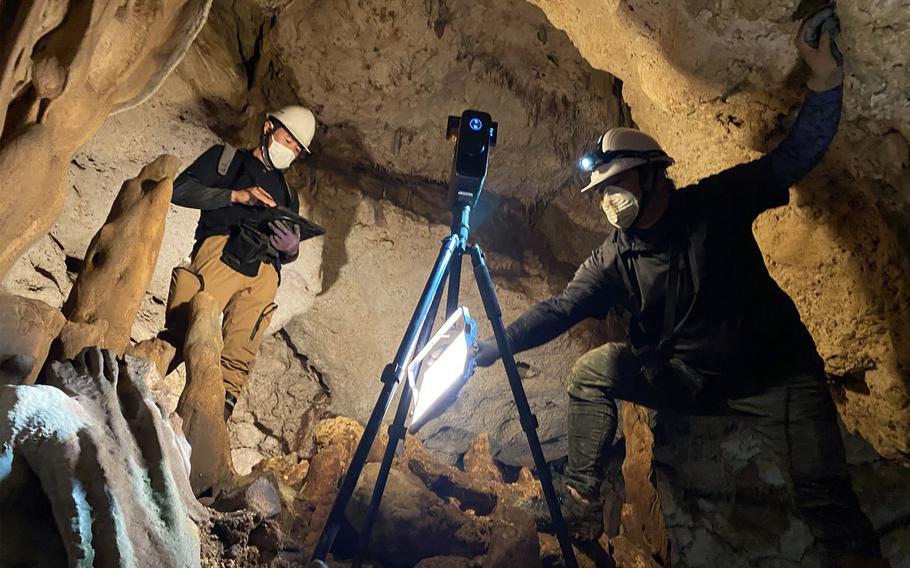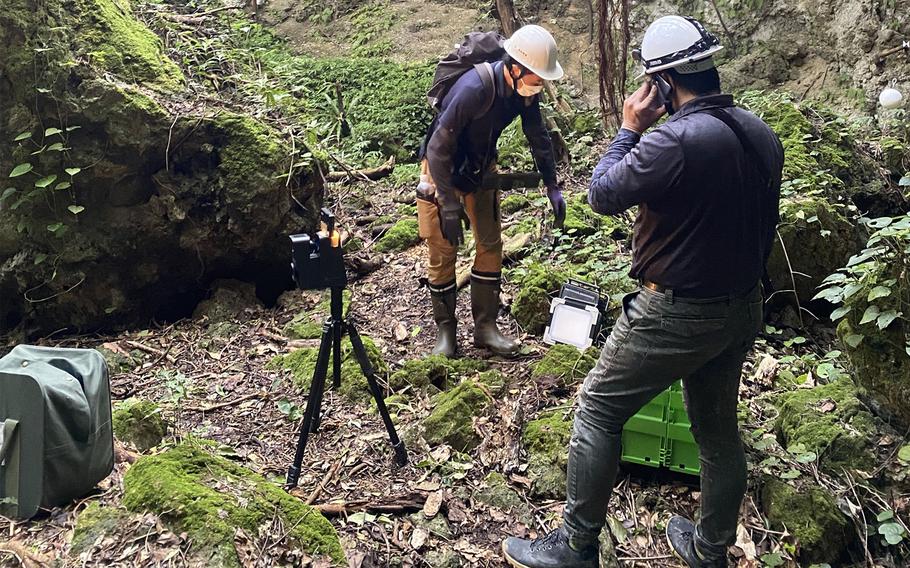
Ikemiya Shokai Co. Ltd., a printing and scanning company in Naha, is developing a 3D tour of Todoroki Cave in time for the Battle of Okinawa’s 80th anniversary next year. (Itoman city)
ITOMAN, Okinawa — The southernmost city on Okinawa is working to create a virtual tour of a deteriorating landmark that provided shelter to refugees and others in the final days of World War II.
Ikemiya Shokai Co. Ltd., a printing and scanning company in Naha, is developing a 3D tour of Todoroki Cave in time for the Battle of Okinawa’s 80th anniversary next year, an Itoman city spokesman told Stars and Stripes by email on May 10.
The final product, which will be similar to a Google Street View, will be available on the city’s website.
The three-month battle in spring and summer 1945 claimed 49,000 U.S. casualties, including 12,500 troops killed or missing. Another 110,000 Japanese troops were killed, and 100,000 civilians were either killed or ordered to die by suicide by the Japanese military.
Many of the latter took cover in caves like Todoroki.
The 330-foot cave was also home to government offices, where the prefectural governor at the time, Akira Shimada, and other officials took shelter and eventually announced the cessation of all their governmental duties.

Ikemiya Shokai Co. Ltd., a printing and scanning company in Naha, is developing a 3D tour of Todoroki Cave in time for the Battle of Okinawa’s 80th anniversary next year. (Itoman city)
More than 600 citizens were rescued from the cave by the U.S. military when the war ended, according to Itoman city’s website.
“The cave is very important to locals since there are worship places where many locals pray, and it also serves as a destination for students from other prefectures for peace education,” the spokesman said.
The cave is deteriorating, however, as evidenced by repeated instances of falling rocks. The city posted a sign warning visitors against entering the cave because of its dangerous condition.
The city decided to scan the cave in 3D to preserve it and allow visitors to see it safely, the spokesman said.
“Scanning the cave was quite challenging due to the uneven floor and the conditions inside, which were dark and humid,” Ikemiya Shokai president Taku Ikemiyagi told Stars and Stripes by phone Wednesday.

Ikemiya Shokai Co. Ltd., a printing and scanning company in Naha, is developing a 3D tour of Todoroki Cave in time for the Battle of Okinawa’s 80th anniversary next year. (Itoman city)
The city initiated the project in Japanese fiscal year 2023 and is planning to release the virtual tour on its website by the end of this fiscal year, which ends March 31, 2025, the spokesman said.
The scans were made this February and March, and the data is now being processed.
“We are planning to release a 360-degree virtual tour where visitors can navigate to the direction they want from the cave’s entrance. Additionally, we will provide explanations at some important points,” the spokesman said.
Many Japanese government officials speak to the media only on condition of anonymity.
Ikemiyagi said the company is compiling information and images of the cave to integrate with the virtual tour.
“For instance, there’s a photograph of a U.S. soldier encouraging surrender at the cave’s entrance,” he said “We aim to associate that image with the location so that people can understand the events that transpired there.”